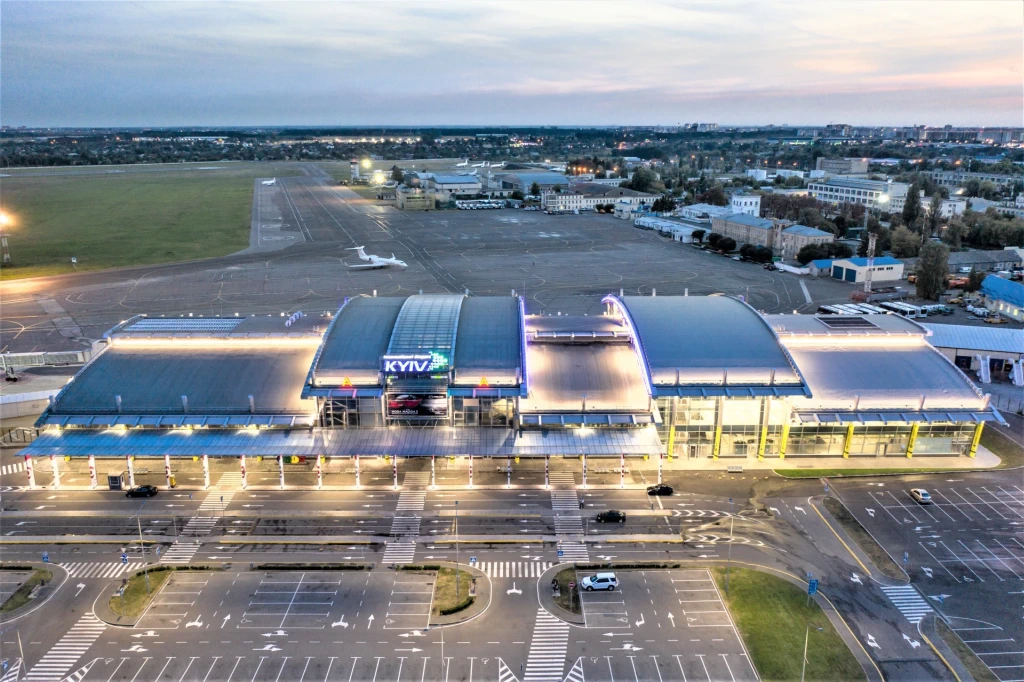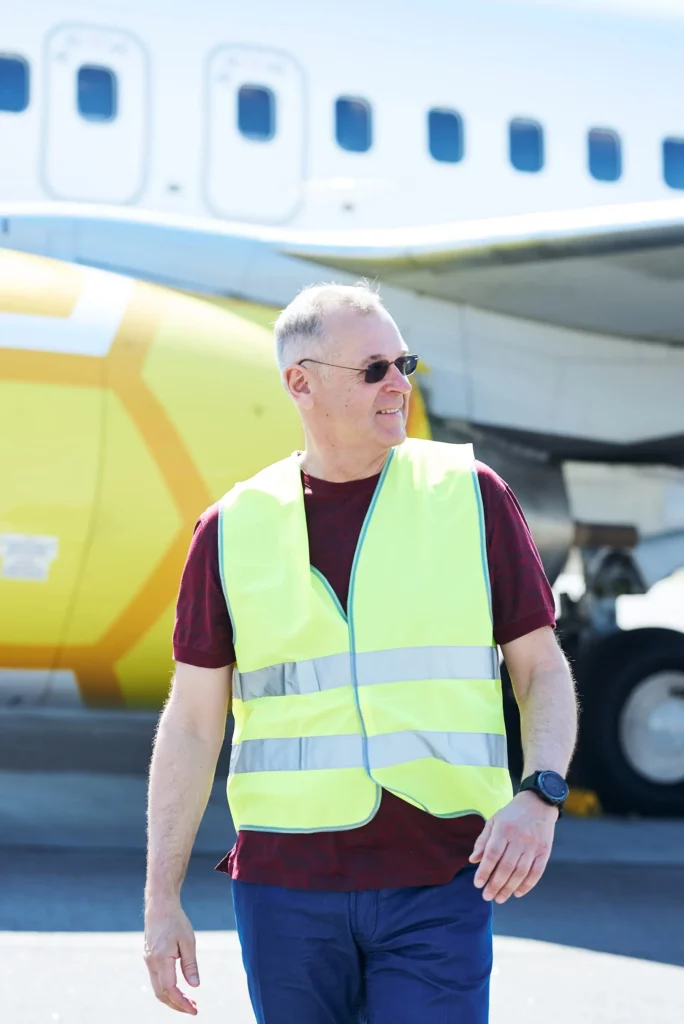Denys Kostrzhevskyi: Reviving Ukraine’s Aviation Industry After the War – A Step-by-Step Approach to Global Success
When it comes to reviving Ukraine’s aviation industry, strategic thinking is paramount. This is not merely about restoring passenger flights or rebuilding airports. The challenge is far greater – we must return Ukraine to the map as a key global aviation player. Achieving this requires a comprehensive, step-by-step, and systematic approach.
Phase One: Resuming Air Transport
There is no doubt that the restoration of air transportation is the first and most urgent step. This entails both passenger and cargo transportation, yet it must begin with a full review of aviation infrastructure. This includes examining and assessing the current state of airfields, airports, and runways. Without a reliable foundation in the form of ground infrastructure, any plans to restore air connectivity will be futile.
Equally important is the modernization of air navigation equipment. We must ensure flight safety at every stage, from air traffic management to navigation within the approach zones of airports.
Only after conducting this review and implementing all necessary measures to restore ground and airport infrastructure and ensure safety can air connectivity be reopened. For a rapid restoration of air transport to pre-war levels, it may be necessary, in the initial stages, to involve foreign airlines. However, it is crucial to always keep in mind that such collaboration must respect the interests of Ukrainian airlines, maintaining parity in the allocation of air routes.
Involving foreign players will allow Ukraine to quickly increase air traffic volumes, restore historical routes, establish new flight directions, and create a foundation and prerequisites for strengthening and developing Ukrainian airlines. This should be the strategic goal of this phase.

Phase Two: Revival of National Carriers
The involvement of foreign companies is merely an initial, intermediate step. The next objective must be the revival and development of national carriers. It is critically important that this restoration of Ukrainian airlines operates within state-guaranteed equal competitive conditions—both with foreign airlines and at the state level. Ukrainian carriers should receive support from the Government through a public-private partnership mechanism. State support is particularly crucial here. However, instead of direct financing, the state should provide guarantees and create favorable conditions for business development.
One of the key issues is equipping national carriers with a modern fleet of aircraft. This can be achieved through a leasing program, where the state provides guarantees for lease payments or loan repayments. With this approach, carriers gradually purchase aircraft using revenue from air transport. This method enables a modern fleet without significant financial pressure on the budget.
Additionally, attention should be given to the role of state institutions such as the Ministry of Foreign Affairs, the Ministry of Infrastructure, and the aviation administration. These entities should advocate for the interests of national carriers internationally, helping to open new routes. Every new route represents not only new business opportunities but also enhances Ukraine’s prestige as an aviation nation.
Phase Three: Revival of Aircraft Manufacturing
After the restoration and strengthening of national airlines, the resumption of domestic and international air traffic, and the establishment of a stable flow of traffic, there will be demand for new aircraft, marking the time to undertake a more ambitious task—the revival of Ukrainian aircraft manufacturing. However, it is crucial to avoid the mistakes of the past. We should not attempt to revive outdated projects, resuscitate long-bankrupt, obsolete state enterprises or holdings, or rely on outdated, inefficient forms of state management. Instead, a new, modern industry must be built from scratch.
It must be openly acknowledged that Ukraine is decades behind leading aviation nations and manufacturers. But this does not mean we should remain on the sidelines. The answer lies in public-private partnerships, attracting leading aircraft manufacturing corporations to create joint production facilities on Ukrainian soil.
Simply put, Ukraine will provide industrial capacity and ensure steady demand for aircraft from national carriers, while partners will supply the technology and establish production. Another critical point is that the global aviation industry is currently experiencing growth. Leading aircraft manufacturers have production schedules filled years in advance. This means that, besides domestic demand, there will be international demand as well. Ukraine should seize this moment to develop its own aircraft manufacturing industry.

Lessons from Turkey: A Path to Success
It is worth paying particular attention to Turkey’s example. A few decades ago, this country had rather modest capabilities in the aviation sector, yet today it stands as one of the leaders in the global market. Turkish Airlines has become a model to follow, having built one of the world’s largest and youngest fleets. How did they achieve this?
Turkey’s key to success was not government control of the industry but government support. The state did not dictate business conditions but instead created a favorable environment for growth. The Turkish government focused on infrastructure development, attracting investments, and supporting the national carrier. Turkey recognized that success in this field requires partnership between the state and the private sector, which became their strategic advantage.
Ukraine can and should follow Turkey’s example, adapting this approach to its own conditions. State support, not control, is the key to building a successful aviation industry capable of competing on the global stage.
Strategic Vision: Ukraine as a Leading Aviation State
To summarize, the following conclusions are clear.
Ukraine urgently needs to develop and enact a National Aviation Development Strategy as law, with a vision through 2050. This strategy should outline the primary strategic goal of transforming Ukraine into a leading European and global aviation hub over the next 25 years. It should encompass three key components:
In addition to the main objectives for the next 25 years, the National Aviation Development Strategy should include a detailed, step-by-step action plan with timelines and designated responsibilities among state and local executive authorities to achieve the declared goal.
It is especially critical that, at the legislative level, the legal foundations for achieving this strategic goal are clearly defined: public-private partnership.
At the state legislative level, it must be recognized that state management is neither efficient nor effective in the airport, aviation, and aircraft manufacturing sectors. The principle of public-private partnership should be enshrined in law as the sole legal mechanism for the revival of the aviation industry.
All state- and municipally-owned enterprises in the aviation sector, including airlines, airports, airfields, ground service companies, airspace management enterprises, aircraft manufacturing, and aircraft design companies, should be promptly transferred into concession under procedures provided by law.
It is crucial to emphasize that the widespread implementation of public-private partnership principles in the execution of the National Aviation Development Strategy does not require budgetary expenditure. This approach will attract significant financial, technical, and intellectual resources from private Ukrainian and international companies without burdening the budget. On the contrary, by transferring state-owned enterprises into concession—particularly those that have relied on taxpayer subsidies for decades—the state, while retaining ownership of all assets, will gain a substantial and stable source of revenue.
In conclusion, here are a few additional arguments in favor of the above.
The social and economic impact of revitalizing the aviation industry cannot be underestimated. This issue extends beyond economic development alone. It impacts numerous aspects of public life and could serve as a crucial catalyst for positive change.
Social Impact: The revival of the aviation industry will create thousands of new jobs across various sectors of the economy. These will not only be jobs within the aviation sector—pilots, engineers, flight attendants—but also in related fields such as manufacturing, services, logistics, and tourism. The availability of stable, well-paying jobs will help improve citizens’ quality of life, reduce labor migration abroad, especially among young people, and foster a broader social transformation. Education programs and training institutions to prepare a new generation of highly skilled professionals for the aviation industry will be an essential part of this transformation.
Economic Impact: The revival of the aviation industry will serve as a powerful stimulus for the development of Ukraine’s economy. Firstly, it will attract both domestic and foreign investment. A robust aviation infrastructure and strong national carriers will be attractive to investors, thereby opening access to new financial resources and technologies. Secondly, the development of air transportation and aircraft manufacturing will increase Ukraine’s export potential. Modern Ukrainian-made aircraft can find buyers in international markets, while expanding air routes will promote trade, tourism, and other services.
National Pride and Independence: The revival of the aviation industry is not only about economic gains but also about restoring national pride. Ukraine has a rich legacy in aircraft manufacturing, and reclaiming this heritage will be a significant symbol of the country’s rebirth after difficult times. This will strengthen national identity, increase confidence in our capabilities, and encourage the further development of other industrial sectors.
International Prestige: A modern aviation industry is an indicator of a country’s technological advancement and economic stability. The revival of this sector will not only restore Ukraine’s status as a regional leader but also strengthen its position on the international stage.
National carriers that compete with leading global brands will serve as Ukraine’s business card, symbolizing its recovery and new beginnings.
Thus, once the war is over, Ukraine will have the opportunity to take these steps and transform the aviation industry into a powerful engine of national development. But for this to happen, all these ideas must be clearly defined and enshrined in a National Aviation Development Strategy. This strategy should serve as a foundation for action by both the government and private companies, ensuring long-term sustainable growth. Only then will Ukraine truly become a leading aviation nation.
Author: Denys Kostrzhevskyi, Chairman of the Board of Directors, Kyiv International Airport
